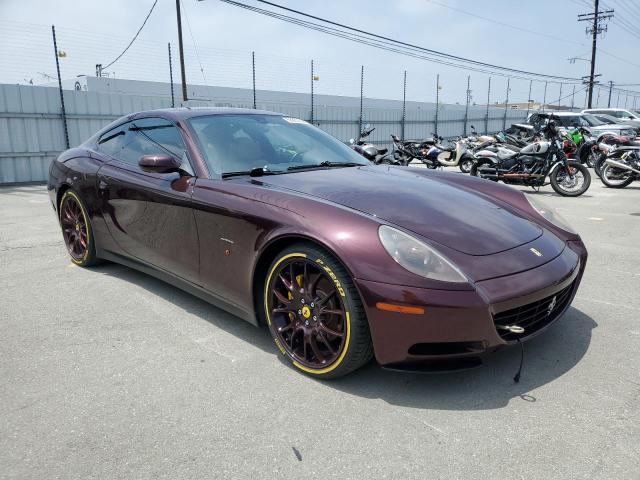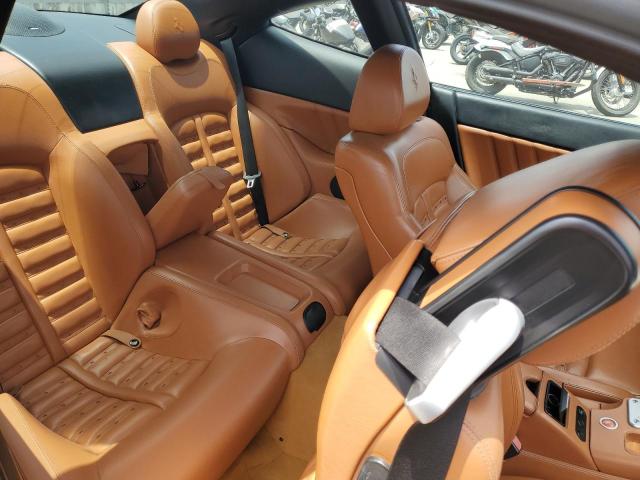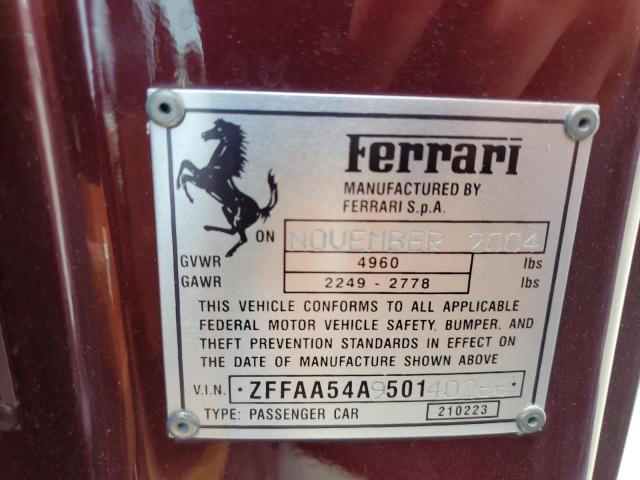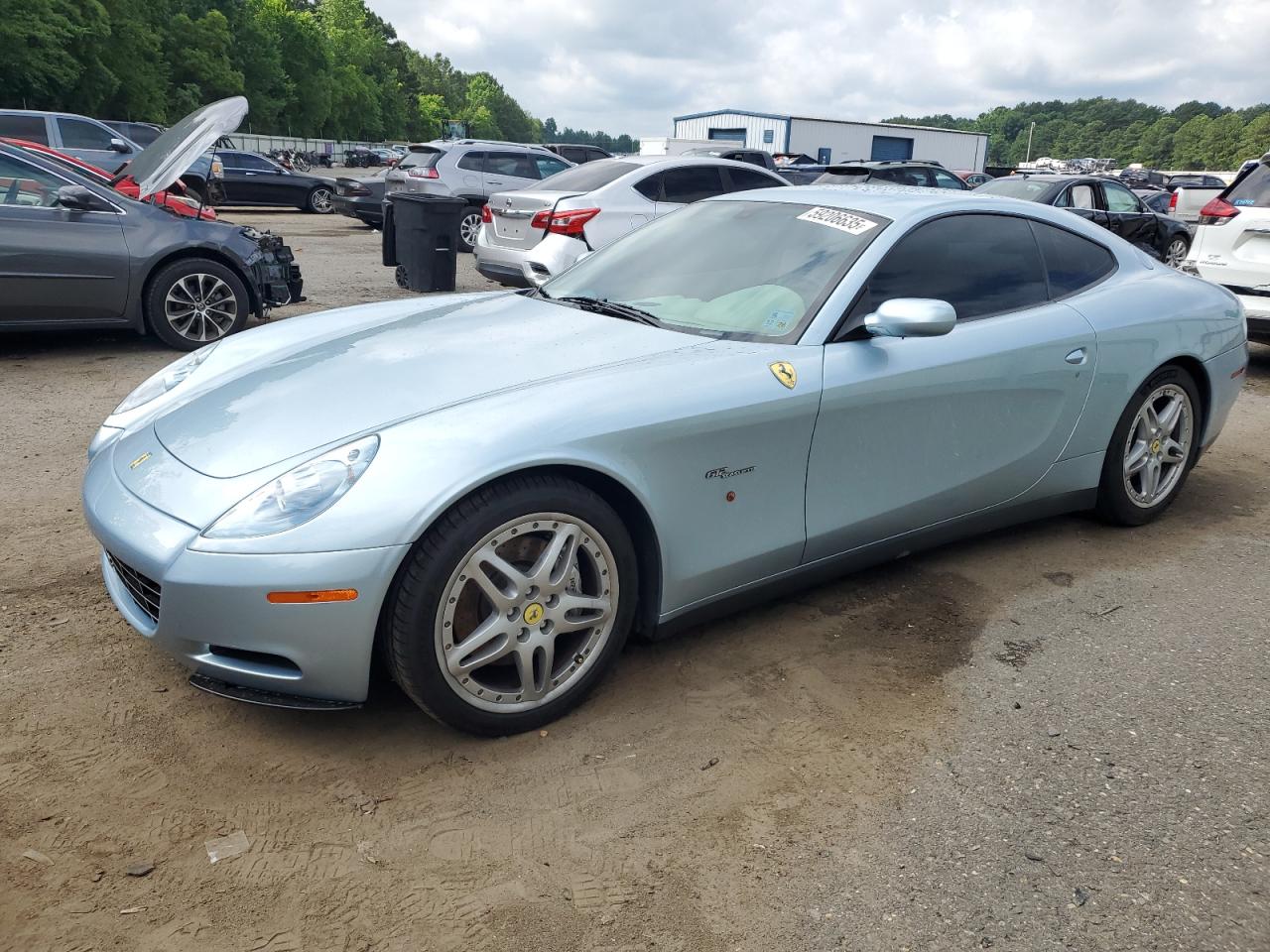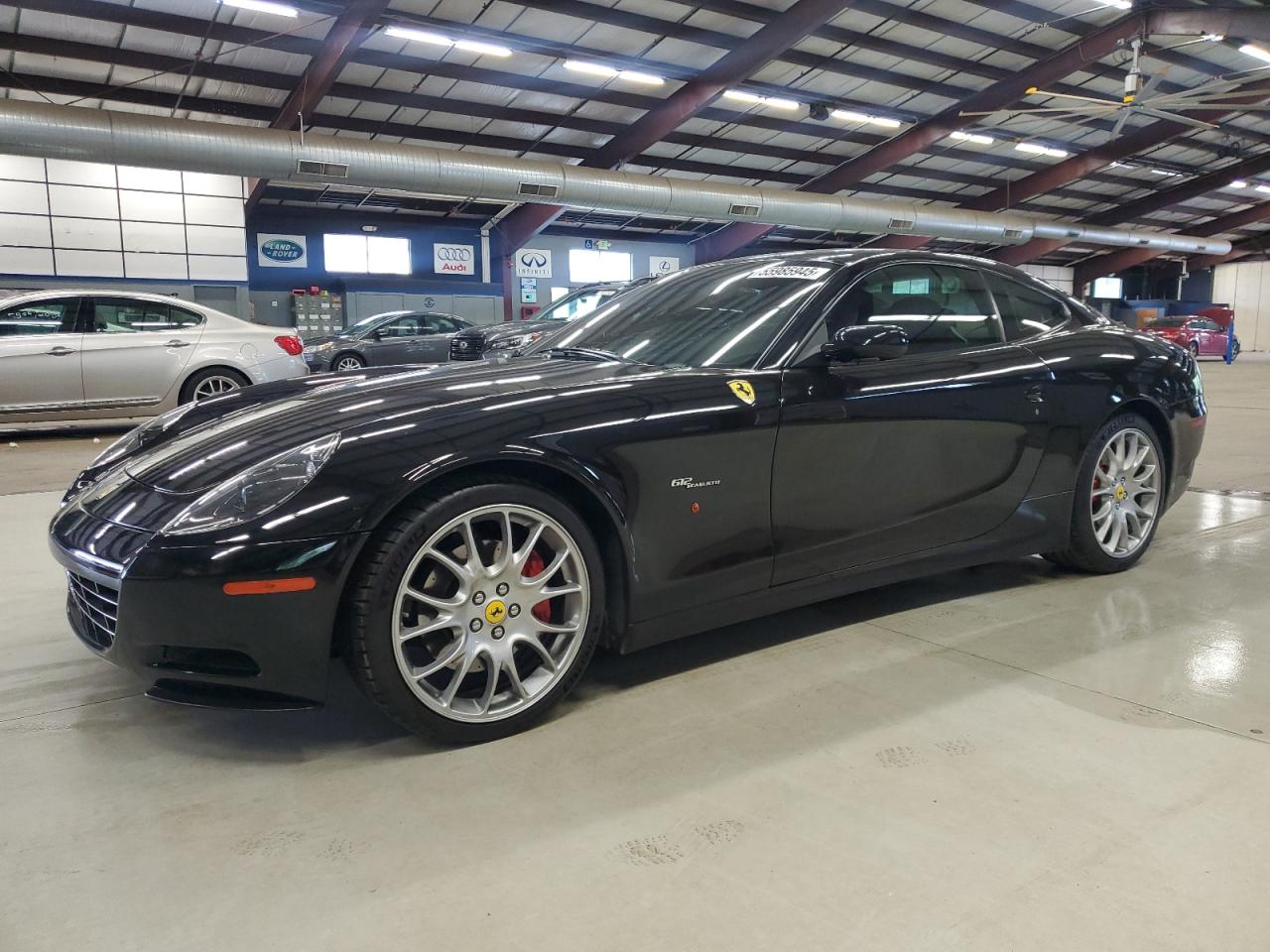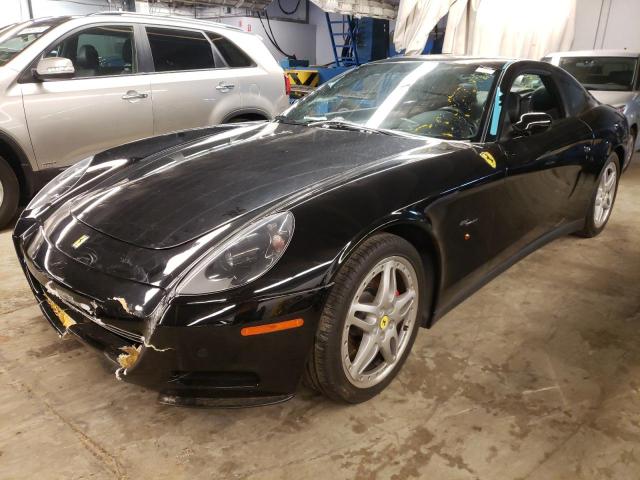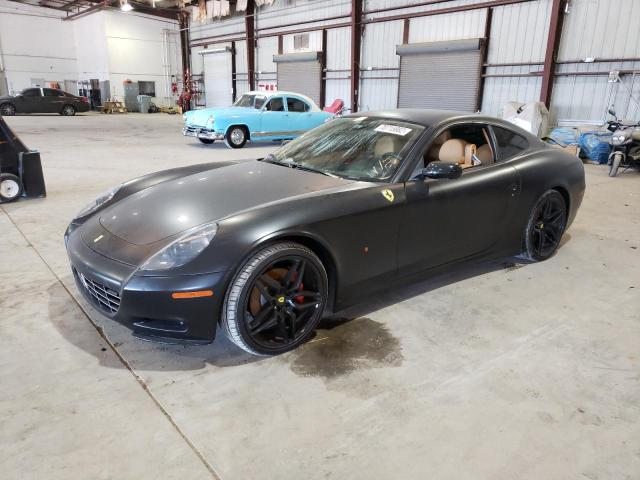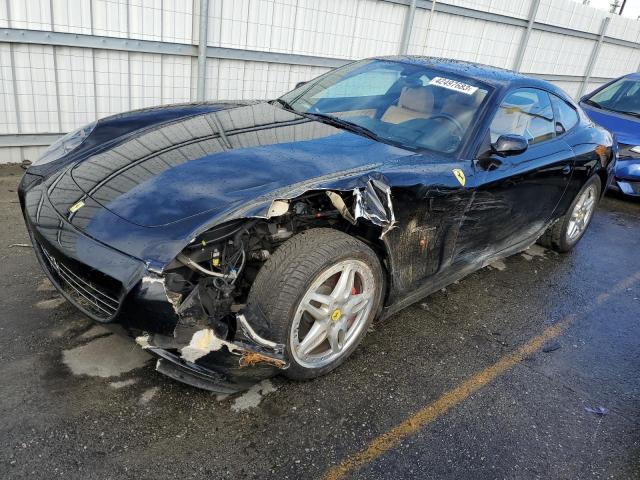2005 FERRARI 612 SCAGLIETTI | ZFFAA54A950140266
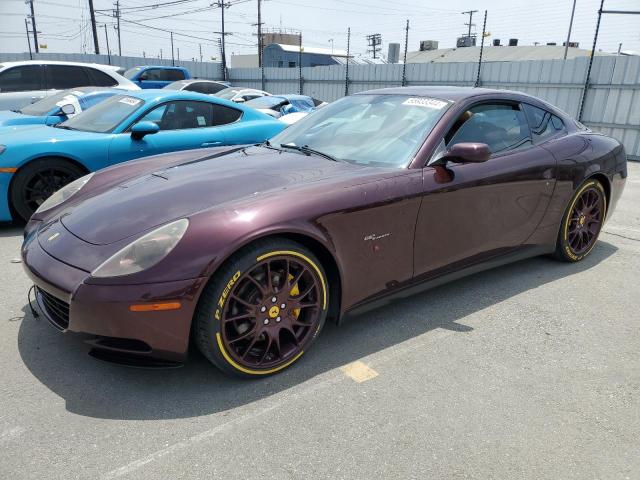 ❯
❯Lot details
- Sale Date2024-05-29
- Lot Number55933344
- ACV108412 $
- LocationCA - SUN VALLEY
- Odometer46,473 miles (74,791 km)
- Primary DamageVANDALISM
Vehicle details
- Make
- Model
- Year2005
- FuelGAS
- Engine5.8L 12
- TransmissionsAUTOMATIC
- Drive TypeRear-wheel drive
Vehicle specifications
1
~$280,000
Engine: 5.7L naturally aspirated V12
Torque: 588 Nm
0–100 km/h: ~4.0 s
The Ferrari 612 Scaglietti is a unique entry in Ferrari’s performance lineage: a large, aluminum-bodied, front-engine V12 grand tourer capable of seating four adults — and doing 320 km/h. Powered by a 5.7L naturally aspirated V12 producing 540 horsepower, it accelerated from 0–100 km/h in 4.0 seconds in its most advanced configuration, despite a curb weight over 1,800 kg.
Developed on an all-new aluminum spaceframe chassis, the 612 introduced cutting-edge structure for its time, offering both rigidity and lightness. Its long wheelbase, near-perfect 46/54 front-rear weight distribution, and optional F1 SuperFast transmission made it surprisingly agile for such a large GT.
The 612 HGTC and One-to-One editions featured upgraded brakes, stiffer suspension, revised stability control, and quicker gear changes — transforming the character of the car from pure GT into a true high-speed continent devourer. While its styling (penned by Ken Okuyama at Pininfarina) was understated, its proportions reflected classical Ferrari elegance and maturity.
Inside, the cabin was trimmed in full leather with bespoke customization options, and technological additions like rear parking cameras, Bose Hi-Fi, and electrochromatic glass roof (on select models) elevated the comfort to a new standard.
The Ferrari 612 Scaglietti earns its place in the performance registry as a V12-powered luxury express, delivering both speed and sophistication — and as the last four-seater Ferrari with a non-electronic, high-revving naturally aspirated V12 before hybridization and turbos began to take over.
Final Bid Ferrari 612 Scaglietti (2005)
$35,250
$40,000
$44,250
Body Styles
A sleek 2+2 grand touring coupe with a long wheelbase, front-mid engine layout, and aluminum spaceframe chassis. Designed by Pininfarina and inspired by the 1954 375 MM built for Ingrid Bergman, the 612 replaced the 456M as Ferrari’s most refined V12 grand tourer. Its graceful silhouette concealed usable rear seats, a spacious trunk, and 200+ mph performance. The One-to-One version introduced bespoke customization, updated interior electronics, and an electrochromic panoramic roof as an option.
Model Name Meaning (Manufacturer)
“612” denotes the engine displacement (~6.0 liters) and 12 cylinders, while “Scaglietti” honors Sergio Scaglietti, Ferrari’s famed coachbuilder known for sculpting iconic 1950s and 1960s Ferrari bodies. This was the last Ferrari model to prominently carry a carrozzeria name in its title. The car emphasized long-distance refinement without abandoning Ferrari's commitment to naturally aspirated V12 power and dynamic balance.
Model Name Meaning (Languages)
Globally, the numeric “612” format was already familiar in Ferrari’s V12 lineage. “Scaglietti” carried significant heritage value, especially among collectors and Italian automotive enthusiasts. The name projected an image of craftsmanship and tradition, rather than aggression or track focus. In every major market, the 612 positioned itself as Ferrari’s most mature, luxurious expression of performance.
Body & Interior Colors and Rims
The 612 Scaglietti was offered in a refined and formal palette suited to its grand touring persona. Iconic Ferrari hues like Rosso Corsa and Giallo Modena were available, but the model stood out in Grigio Ingrid, Blu Pozzi, TDF Blue, Argento Nürburgring, and Grigio Silverstone – emphasizing elegance over flash. The One-to-One program introduced even more bespoke options, including matte finishes, historic liveries, and two-tone roof treatments.
Interior themes ranged from full-grain leather in Nero, Cuoio, Beige Tradizione, or Bordeaux, to Daytona-style seats, contrast stitching, and carbon fiber or piano black trim. The cabin was quieter and roomier than any Ferrari before it, with rear seats genuinely usable for adults, dual-zone climate control, and (in later models) Bose sound, iPod integration, and updated infotainment. The One-to-One edition offered a personalized fitting session at Maranello to tailor leather types, seat contours, carpet colors, and headliner finishes.
Wheel designs included 18- and 19-inch split-spoke alloys, with diamond-cut finishes and chromed center caps on higher trims. HGTS and HGTC variants featured modular wheels, sport suspension, carbon-ceramic brakes, and a more vocal exhaust, while keeping the exterior changes subtle. Painted brake calipers were available in silver, yellow, red, or aluminum.
Top Expensive Options
- HGTS / HGTC Handling Packages (Sport Exhaust, Suspension, CCM Brakes): ~$15,000
- Electrochromic Glass Roof (One-to-One): ~$20,000
- Rear Parking Camera and Front Sensors: ~$3,500
- Carbon Fiber Interior Upgrade Pack: ~$7,000
- Daytona Seats with Contrast Stitching: ~$4,800
- Custom Painted Calipers and Shields: ~$1,500
- BOSE Hi-Fi Sound System with Subwoofer: ~$4,000
- Two-Tone Exterior Paint via Atelier: ~$10,000
- Full Alcantara Headliner or Carbon Sill Plates: ~$2,500
- Luggage Set (Custom-fit Leather with Embossed Cavallino): ~$4,500
vs Competitors
The Ferrari 612 Scaglietti, produced from 2004 to 2011, was Ferrari’s flagship 2+2 grand tourer, built to combine V12 performance with true long-distance comfort and rear passenger space. Named after famed coachbuilder Sergio Scaglietti, the 612 introduced an all-aluminum chassis and a spacious interior while retaining Ferrari’s focus on speed and driving emotion. It was aimed at buyers who wanted Ferrari pedigree in a more refined and usable package. Its main competitors included the Aston Martin DB9, Bentley Continental GT, Mercedes-Benz CL65 AMG, Maserati Quattroporte, and Porsche 911 Turbo S (997) — although few matched the 612’s exact blend of size, engine layout, and prestige.
Against the Aston Martin DB9, the 612 offered more interior space, especially for rear passengers, and significantly greater performance thanks to its 5.7-liter V12 producing 540+ hp. The DB9 was admired for its beauty and luxurious feel, but it lacked the Ferrari’s sharper chassis dynamics and mid-range pull. The 612 also offered Ferrari’s F1 automated gearbox, though some enthusiasts preferred the rare gated manual version for a purer driving experience.
When compared to the Bentley Continental GT, the 612 felt more athletic and naturally aspirated, whereas the Bentley delivered effortless W12 power with all-wheel-drive security and opulent craftsmanship. The Bentley was better suited to cruising in silence, while the 612 demanded and rewarded driver engagement — with its rear-wheel-drive layout, front-mid engine balance, and lively handling at speed.
The Mercedes-Benz CL65 AMG rivaled the Ferrari in comfort and torque, with its bi-turbo V12 producing immense straight-line performance. But the Mercedes was much heavier and leaned toward a luxury-first philosophy. In contrast, the 612 emphasized dynamic poise, emotional engine response, and high-revving power, offering a more engaging, visceral connection to the road.
Compared to the Maserati Quattroporte, which shared some DNA with Ferrari under the Fiat group, the 612 was positioned a tier above. The Maserati offered four-door practicality and a sporty, luxurious vibe, but it couldn’t match the Ferrari’s performance, exclusivity, or V12 pedigree. The 612 was also more refined and structurally advanced, with a focus on grand touring grace.
Lastly, the Porsche 911 Turbo S (997) was more compact, quicker off the line thanks to AWD and turbocharging, and easier to live with in city environments. However, the Porsche lacked the Ferrari’s emotional weight, GT proportions, and handcrafted sense of occasion. The 612 was less agile but far more dramatic — visually and aurally.
Fun Fact
The 612 was the last Ferrari offered with a traditional gated 6-speed manual gearbox – an extremely rare configuration ordered by fewer than 3% of customers, making manual 612s among the rarest modern V12 Ferraris ever built. It was also the first Ferrari GT to feature a front passenger airbag as standard, highlighting its usability and forward-thinking design in safety and packaging.





